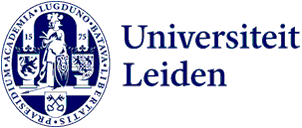
Archaeology Inter-Section journal offers students the chance to publish: ‘Inter-Section is a great way to get your work in the spotlight’
The Faculty of Archaeology's own home-grown journal Inter-Section has released a new volume. Inter-Section offers students and PhD candidates the unique chance to publish in a peer-reviewed journal. Karel Kuipers and Tullio Abruzzese contributed to the new volume.
Scratches in a cave
Both Tullio as well as Karel were Master's students at the Faculty of Archaeology at the time they started working on their articles. 'I am only part archaeologist,’ Karel notes, ‘I am currently doing a double PhD in Philosophy and. My article was about semiotics which is the study ofmeaning making, and how this cannot be properly applied to Paleolithic sites. Take for example engravings in a cave. They are sometimes interpreted as symbolic, but to put it simply we cannot say it is a symbol if we do not know what it means.’ A recurring question in Paleolithic archaeology is which species of early humans had a capacity for symbolic behaviour. ‘This question basically boils down to: when did we become ‘human’?’
The topic on alleged symbolism was discussed in a chapter in Karel's thesis. ‘My supervisor at the time recommended me to see if I could get it published in Inter-Section. As an exercise in getting published, I ended up submitting.’

Paleolithic biases
For a paper writing assignment, Tullio worked on the topic of bias in Paleolithic research. ‘Similar evidence from Neanderthal and Homo sapiens contexts are treated differently,’ Tullio explains. ‘Homo sapiens are seen as if operating on a higher level, in contrast to Neanderthals. This goes back to what I think is a universal underlying way of reasoning in the western world. An ethnocentric mindset that created the western way we think about many things, amon which archaeological evidence.’
Tullio was writing a paper on the subject when Alexander Verpoorte suggested sending it to Inter-Section. ‘I spend a lot of time writing the paper, but with a little twisting I was able to change it into a submitted article.’

Emotional rollercoaster
Sending in an article proved only to be the start though. ‘It was the first time I actually submitted something for publication,’ Karel states. ‘What happened next is a funny story. Lasse van den Dikkenberg edited my article, and we were both pretty harsh on each other. I first got some harsh reviews, and I sent in some harsh rebuttals.’ He laughs. ‘We get along great now.’
The whole process turned out to be an emotional one. ‘After a couple of days I cooled down a bit. In the end Lasse and I agreed that this harshness turned it into a better article. It was a very educational and pleasant experience. And more importantly, by going through this process of being reviewed, in a safe environment instead of out there in the real world, it is very nice to already have this experience.’
Different impact
Tullio recognises the emotionality of the whole process. ‘I worked really long on my first draft. And when I received the first feedback, which was not harsh at all, but fair, I took it personally. I should not have done that.’ But the most difficult part was the critism on the second and third draft. ‘The second reviewer was very knowledgeable about the topic that I covered, so he critised me on basically everything. As this came from an assignment, I had no strong background at that time, and it took me a lot of time to address all the comments.’ However, looking back upon it now, he is grateful for the challenge. ‘The paper now has a different impact. It is on a completely different level than what I started with.’
Reflective experience
Both authors are thankful for the experience. ‘Lasse taught me a lot,’ Karel notes. ‘Like how to formulate things in a way that they make sense to different audiences. This experience of being able to go through this process and dealing with reviewers and editors is very valuable. I don't consider myself a very emotional person, but had an effect on me. You put a lot of time and energy in a paper, you send it in, and then you get comments by reviewers that your work is not that good. It was a reflective experience; This is what trying to get published feels like, and I am going to feel this again. I have learned to mentally prepare myself for this.’
Meeting certain standards
Tullio concurs: ‘I totally agree with Karel. It's a very nice environment to experience this for the first time. Inter-Section is a great way to get your work in the spotlight. It's fun!’ As with Karel, it taught Tullio important academic lessons. ‘Like I should not assume the level of understanding of the reader. While the reasonings in the article were clear for myself, the editors did not understand, so I should be more critical of myself. A published article needs to meet certain standards, and the process of getting there is very interesting.’

